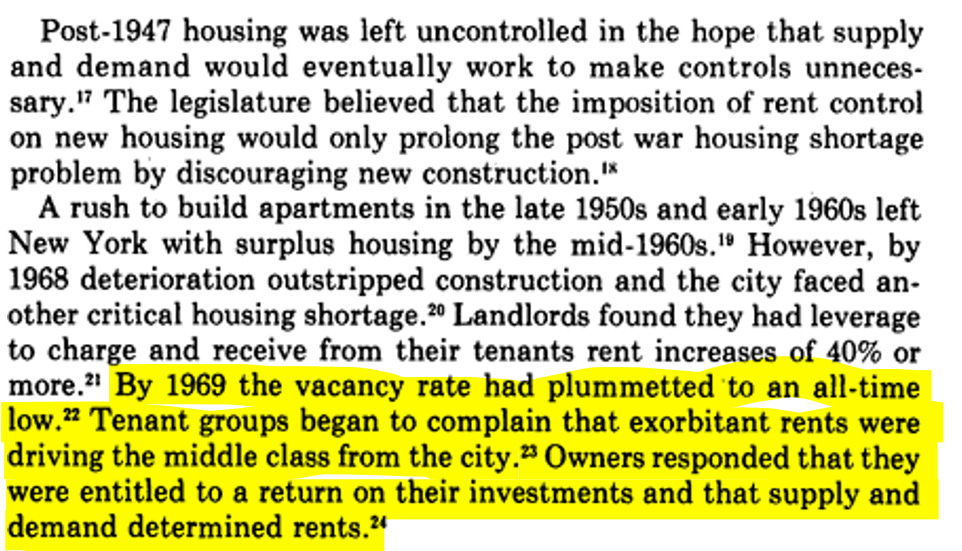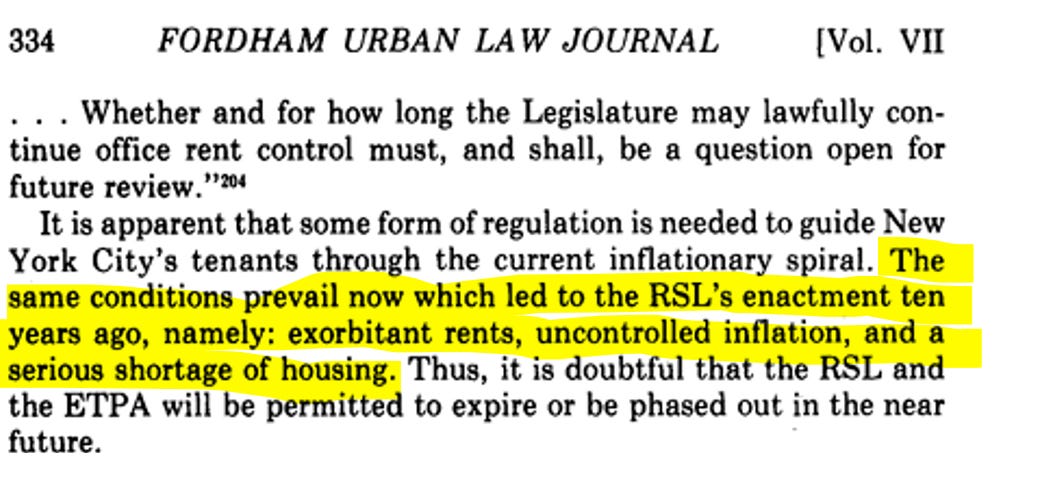The Rent Regulation Structures in NY
Where there used to be one strain of rent regulations in New York City, there are now two. Instead of only the Rent Stabilization Law (and, to a lesser extent, Rent Control), there is now also Good Cause Eviction (GCE). Previously, ~1.2 million rental apartments in NYC were exempt from regulations. Because of GCE, there are now only 200,000-600,000 exempt apartments. I use a broad estimate because it's unclear how many apartments are exempt at this early stage. Does this conjure up images of you lopping off the hydra's head only to find yourself staring at two new heads instead of one? No, of course not. Still, since nearly all the housing stock is subject to cashflow restricting regulations, new buyers keen on investing in NYC should ensure they understand both systems.
Rent Stabilization
The Rent Stabilization Law (RSL) was enacted in 1969 in New York State as an alternative to rent control for all housing built after 1949. The RSL took a form close to the one known today in 1974 after the Emergency Tenant Protection Act (ETPA) became law. In some regards, landlords welcomed rent stabilization instead of rent control in 1969 because it meant more significant rent increases. Before the ETPA's passing, newer buildings were allowed to be decontrolled, but the scarcity of housing supply led to substantial rent increases, causing distress for some tenants, much like today. Tenant difficulties in finding housing in the early 1970s were a core driver behind the birth of modern rent stabilization.
A Look Back in Time: Vacancy Rates 50 Years Ago Were Similarly Alarming

Key Question: Which Apartments are Subject to Rent Stabilization?
"If it looks like a duck, swims like a duck, and quacks like a duck, then it probably is a duck." - The Duck Test.
That's how investors should consider looking at properties' fair market or rent stabilized statuses. If the NYC multifamily property was built before World War II (you know the look), it was rent stabilized in 1974. Prior owners either took specific steps to decontrol the apartments or didn't take the steps, and the apartments weren't decontrolled. Buildings can contain a mix of de-controlled and stabilized/controlled units. If sellers or brokers advertise properties as being fair market, buyers should ask what the sellers have done to earn fair market designations. See a few good resources below to confirm a building's rent stabilization status.
A few areas to check:
Homes and Community Renewal (HCR)
HCR is the best place to research a building's rent stabilized or fair market status. Investors can start by doing a rent stabilized building search here. If no results are found, going to the HCR and requesting documents can help.
The Department of Finance (DOF)
The DOF can provide little actionable data, but it can swiftly confirm a suspicion that a building is rent stabilized. The DOF levies additional fees for apartments subject to rent stabilization in a building (lol), and these fees are printed on property tax bills.
The DOB is a good resource for researching building history, and it can offer valuable insight into the original apartment counts at initial construction. The website has property profiles for each New York building and sometimes includes a Certificate of Occupancy (CO). The COs available can provide insights into the number of units built, which is a good clue into whether a building is rent stabilized. Investors can also ask for blueprints or microfilms. If there are no COs, ask for Letters of No Objections.
E-Housing Court of NY (by County)
Rent overcharge court decisions that favor building owners sometimes refer to building rent stabilization status—exempt from or subject to rent stabilization—which can serve as solid evidence against rent regulation.
Good Cause Eviction
Good Cause Eviction just "passed" into law in April of this year through Governor Hochul's budget proposal (legally, Hochul still needs to sign the Senate bill for it to become law). I have written extensively about this in my newsletter. Before Good Cause "passed" at the state level, several NY cities had demonstrated their support for the law by passing Good Cause bills in their communities. Good Cause Eviction has been in place in parts of New Jersey and many areas of California for a few decades, so the principles driving the law have precedents and are inspired by current systems. Good Cause Eviction is not a brand-new idea.
Good Cause Eviction works like Los Angeles County's rent control law. Tenants residing in Good Cause properties will not be subject to rent increases greater than {inflation +5%}, which usually means less than 10% rent increases. Further, property owners must have good causes before evicting tenants. Without a "good cause" (outlined here) to remove tenants, property owners must renew leases to tenants. Investors buying fully occupied buildings subject to Good Cause should expect cashflows that mirror the shape of rent stabilized buildings. Tenant leases under both systems of rent regulation guarantee predictable and modest rent increases. The key difference between rent stabilization and Good Cause Eviction systems is what happens to rents after vacancy. When tenants protected by Good Cause vacate, landlords can raise their apartment rents to market. In rent stabilized apartments, this is not the case. The rents paid by vacated tenants are locked in place, and the following tenants must pay the same rent + the yearly rent increase allowed by the Rent Guidelines Board. In summary, vacancies are valuable in Good Cause Eviction apartments, but in rent stabilized apartments, they are not (with some exceptions).
What Apartments are Subject to Good Cause Eviction?
All apartments in NYC that are not subject to rent stabilization or rent control, were built prior or renovated prior to 2009, and are not owner-occupied are subject to Good Cause Eviction rules. The Good Cause law covers a broad swath of properties and is intended to pick up where the RSL stops. The main exception is for newer properties and buildings; the legislature does not want to disincentivize the production of new properties and further stoke housing scarcity.
A Look Back in Time: In 1979, NYC Grappled With the Same Housing Scarcity

Before investing in NYC multifamily, it's important to understand the overlapping rent regulations. The future cashflows of your investments depend on your becoming fluent in the language of government compliance. Misunderstanding these laws and the thinking that drives them could leave you feeling exposed or surprised if regulations shift in undesirable ways.
For more information on the evolving rent regulated building code of NY State, please get in touch.
I am bullish on NYC multifamily. Call me: 212 658 1471.
Source: Diane Ungar, Emergency Tenant Protection in New York: Ten Years of Rent Stabilization, 7 Fordham Urb. L.J. 305 (1979).


